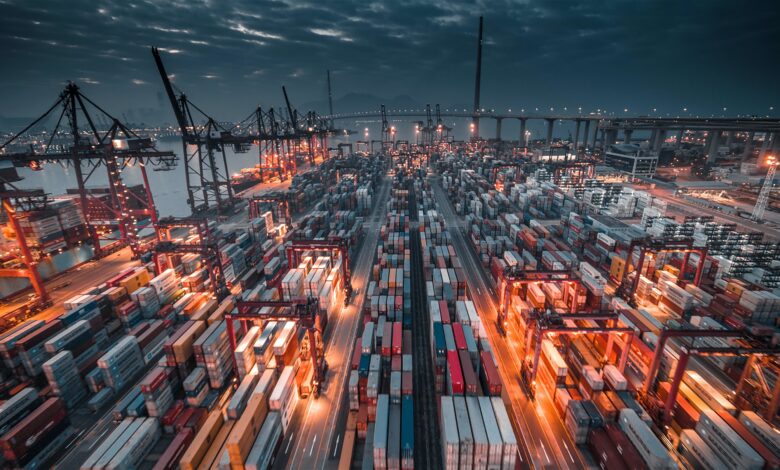
By Pinelopi Koujianou Goldberg and Michele Ruta
Special to The Times Kuwait
Global trade is undergoing a profound transformation, driven by three major shifts. New technologies are redefining countries’ comparative advantages and the types of goods they produce and export. The revival of activist trade and industrial policies threatens to distort trade flows and provoke retaliatory measures. And escalating tensions risk fragmenting the global economy along geopolitical lines.
The combined force of these shifts can reshape global trade patterns, marking a clear departure from the global economic landscape that defined the past three decades. Although the changing nature of globalization is at the forefront of current policy debates, the focus has primarily been on the needs and priorities of advanced economies. But what are the implications for developing economies?
To answer this question, it is essential to understand the role of trade and globalization in advancing development. Over the past three decades, many developing economies have pursued an export-led growth model, benefiting from immediate efficiency gains and sustained productivity improvements. Initially, these economies specialized in low-skill, labor-intensive manufacturing, leveraging abundant workforces and investments from advanced economies. Their newfound access to global markets and foreign expertise enabled them to adopt new technologies and achieve economies of scale. As trade-driven manufacturing growth spilled into other sectors, it became a powerful engine of broader economic progress.
Admittedly, development does not happen in a vacuum. The post-1990 surge of export-led growth depended on several critical factors, chief among them technological advances—particularly in information and communication technologies— that paved the way for the emergence of globalized supply chains. With production processes divided across multiple countries and components traded across borders, developing economies were able to capitalize on their comparative advantages by specializing in specific manufacturing tasks.
The second factor was effective policymaking. The embrace of multilateralism, the entry of developing countries into the World Trade Organization, and the minimal use of industrial policy by advanced economies enhanced the predictability and openness of the global trade system. Meanwhile, ‘deep’ trade agreements served as a mechanism to discourage trade-distorting measures and promote structural reforms.
Lastly, the end of the Cold War ushered in a period of relative geopolitical stability, peace, and predictability. This environment, underpinned by a philosophy that prioritized economic efficiency over national-security concerns and political ideologies, was instrumental in ensuring the smooth functioning of global supply chains.
But conditions have changed, as evidenced by technological innovations like robotization, 3D printing, and artificial intelligence, which could have far-reaching and complex implications for economic development. Although the wave of automation fueled by these technologies threatens to displace low-skilled workers, eroding the competitiveness of labor-abundant, low-income economies, it could also enable companies to boost productivity and expand. This, in turn, might increase demand for intermediate inputs and stimulate trade with developing countries.
Perhaps more importantly, technological advances could make services more tradable, unlocking new opportunities for export-led growth but also posing significant challenges for developing economies. Unlike manufacturing, business and IT services require a highly skilled workforce. To transform such service sectors into growth engines, governments will need to invest heavily in training and upskilling workers.
The implications of shifts in policies and geopolitics for global trade are equally complicated. Approximately 20 percent of the industrial policies adopted by developed economies in 2023 were driven by geopolitical and national-security considerations. For example, measures targeting electric vehicles and semiconductors were justified as an effort to diversify supply chains away from geopolitically sensitive locations.
While the short-term effects of geopolitical tensions are the subject of ongoing research, one notable finding from our own work is that they are fundamentally reshaping trade flows. The United States is a case in point. Since the start of the Sino-American trade tensions in 2018, several developing countries have emerged as key suppliers to the US market. This can be attributed to the apparent reconfiguration of global supply chains and, crucially, to the rerouting of Chinese-made intermediate goods through third countries.
That said, trade tensions are not inherently beneficial for developing economies. For starters, the countries that have gained the most from the reallocation of trade flows are not low-income economies on the margins of globalization, but rather those that are already deeply integrated into the global trading system, such as Malaysia, Mexico, and Vietnam.
Moreover, simulations show that the world’s fragmentation into competing blocs would hit low-income countries the hardest. Over the past three decades, access to open global markets has created enormous growth opportunities for developing economies. Moving away from this model would disproportionately harm poorer countries that lack the large domestic and regional markets needed to offset the loss of international trade.
To be sure, the new global economic landscape is still taking shape. But it is increasingly clear that the changing nature of globalization will make it harder to replicate the export-driven growth miracles of the past few decades. Addressing the three major trade shifts reshaping our world calls for pragmatic, forward-looking solutions.
 Pinelopi Koujianou Goldberg
Pinelopi Koujianou Goldberg
Pinelopi Koujianou Goldberg, a former World Bank Group chief economist and editor-in-chief of the American Economic Review, is Professor of Economics at Yale University.
 Michele Ruta
Michele Ruta
Michele Ruta is Deputy Division Chief of the Strategy and Policy Review Department at the International Monetary Fund.
Copyright: Project Syndicate, 2024.
www.project-syndicate.org












